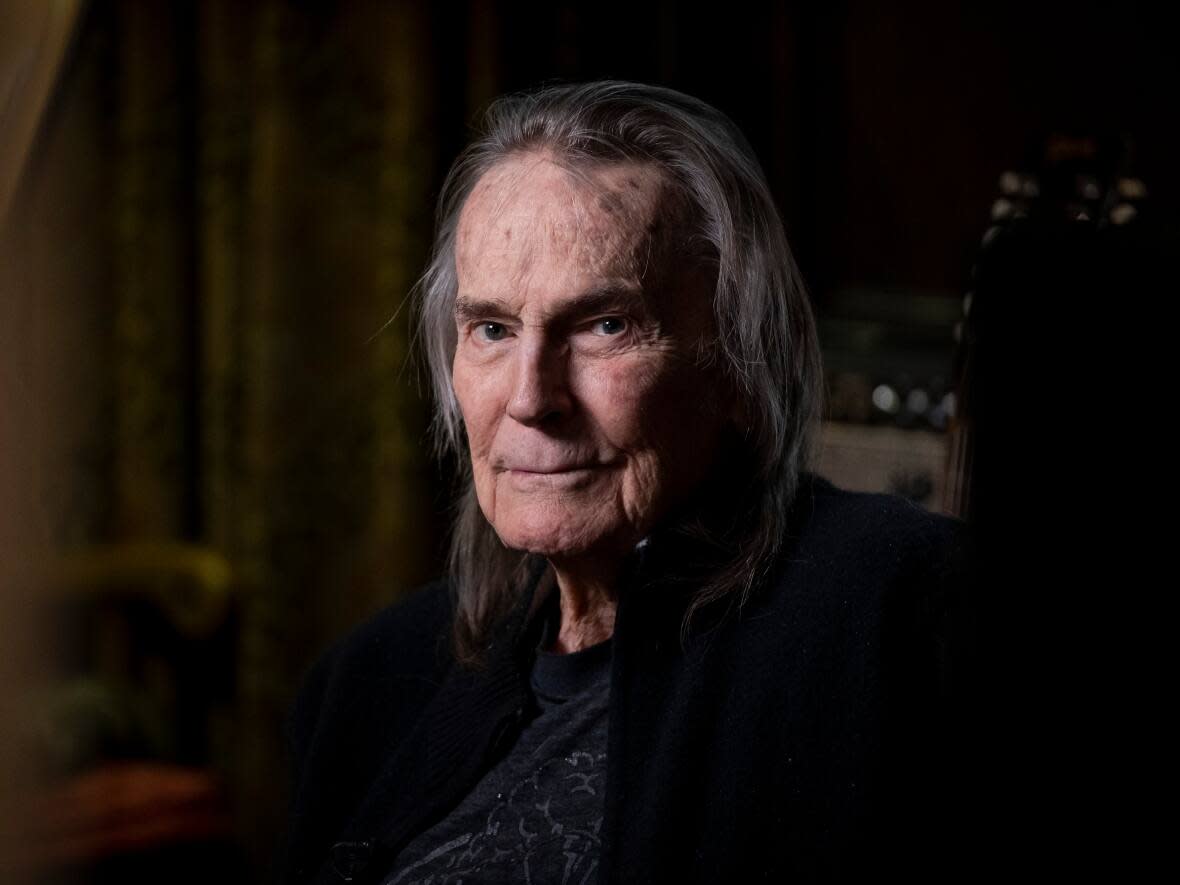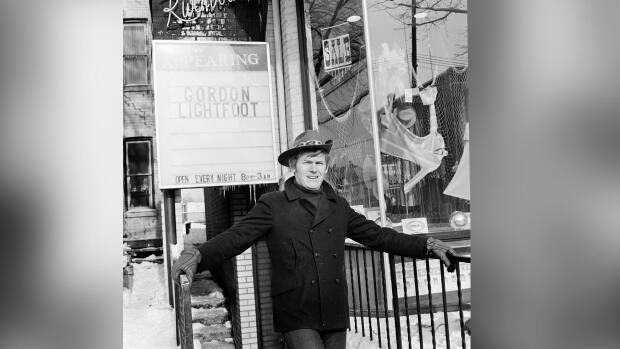How Yorkville's hippie music scene propelled the late Gordon Lightfoot to fame

If you took a stroll past the aging Victorian homes-turned coffee houses that line the streets of Toronto's Yorkville neighbourhood in the 1960s, there was a good chance you might spot Gordon Lightfoot.
The area that's now largely associated with couture shopping and pricey dining options once served as a launch pad for the city's counterculture, hippie movements, and folk music revival that catapulted many artists into stardom, including Lightfoot.
And as Canadians honour the folk music legend who died Monday, it's crucial to understand the singer-songwriter's roots and loyalties were deeply tied to Toronto, particularly the folk music scene in Yorkville, music historians told CBC Toronto.
"So many musicians were playing there, Neil Young, Joni Mitchell, Ian and Sylvia and Gordon Lightfoot. That was the 60's folk singer-songwriter scene … that's when Gordon Lightfoot started to be heard," said Robin Elliott, the Jean A. Chalmers Chair in Canadian Music at the University of Toronto.
Where Lightfoot rose to fame is a very different Toronto than we know today, Elliott said.
Folk music thrived at Yorkville coffee houses
In the 1960s, Yorkville's coffee houses were reminiscent of the Haight-Ashbury neighbourhood in San Francisco, which was a centre for hippie counterculture at the time, said Elliott.
Elliott recalls going to Yorkville as a teenager and seeing houses decorated with psychedelic colours with drug paraphernalia being sold, and everyone was smoking. These coffee houses were dimly lit spaces that housed discussion and music well into the night.

"The coffee houses drew customers in having live musical acts," he said. At the height of the scene in the late 1960s, artists including Lightfoot would often perform.
"He became well known through his participation, a member of the Yorkville scene," said Elliott.
In the 2019 CBC documentary If You Could Read My Mind about Lightfoot and his life, the musician said that "Yorkville was it's own little community." The film highlights the hold Lightfoot had over the coffee house attendees, who were blown away by his vocals and lyricism.
However, Lightfoot's image at the time was not the shoulder-length grey hair tucked behind his ears that featured prominently in his obituaries this week. He looked like a "slightly older church choir boy" while performing in Yorkville, Elliott joked.
Later, he "let his hair down" but still within limits, said Elliott. Though he was part of the hippie Yorkville scene, he didn't entirely fit in and wasn't known as a particularly radical member, he said. At this time Lightfoot was known more as a prolific songwriter, rather than a singer.
But his impact on the neighbourhood and the folk revival movement was strongly felt across the city. Lightfoot was very involved in the Mariposa Folk Festival on the Toronto Islands, which often scouted artists from the Yorkville scene, said Stacy Allison-Cassin, an assistant professor at the school of information management at Dalhousie University.
Allison-Cassin launched a website with students at York University in 2017 on the Yorkville coffee house scene, which includes information about Lightfoot's affinity for the Riverboat Coffee House.
The Riverboat closed in 1978, but housed packed audiences in the mid-1960s. Lightfoot was at a ceremony unveiling a city plaque to mark the significance of the coffee house in 2009.
"Such an important part of Toronto's musical history is wrapped up in Yorkville and Gordon Lightfoot was such a big part of that," Allison-Cassin said.
Lightfoot stayed true to Toronto amid fame
After his bursting onto the Yorkville scene and signing with Bob Dylan's manager in 1964, Lightfoot also crafted music that was distinctly Canadian at a time when many artists weren't looking to emphasize that element of their identity, said Elliott.
It wasn't common to remain in Canada following success, he said.
"The first thing [Lightfoot] did when he had a big success was buy a nice house in Rosedale. And every 18 months or so, he did concerts at Massey Hall, and that's the quintessential Toronto concert hall," he said.
Jason Schneider, an author who wrote the book Whispering Pines: The Northern Roots of American Music ... From Hank Snow to The Band told CBC Toronto that Lightfoot represents to Canada and Toronto what Bob Dylan represents to the U.S.
"He flourished right away, and a lot of that was due to his channelling of his life and his environment within Canada, and that offered a completely new perspective on folk music," said Schneider. "What Gordon's songs offered was this clear view of what it was like to live in Canada."
Lightfoot had a humility to him, and was often flattered to have his music played — so continued loyalty to the music scene and city he emerged from is a piece of that, he said.
Another loyalty for Lightfoot was to the Toronto Maple Leafs — Elliott said Lightfoot was also known to write songs while watching the Leafs play. "So I'm glad that he got to experience the Toronto Maple Leafs finally winning," he said.
"That was a nice sendoff for Gordon. He was a big Toronto Maple Leafs fan."


